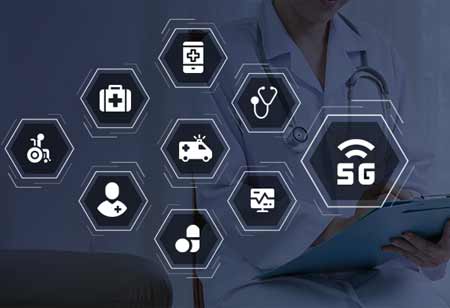THANK YOU FOR SUBSCRIBING
The Role of Advanced Technologies in Human-Robot Collaboration
Technologies that enhance safety, efficiency, and effectiveness in shared workspaces are reshaping human-robot collaboration.

By
Apac CIOOutlook | Tuesday, July 23, 2024
Stay ahead of the industry with exclusive feature stories on the top companies, expert insights and the latest news delivered straight to your inbox. Subscribe today.
Advanced technologies are crucial in human-robot collaboration, boosting safety and efficiency in shared workspaces. These tools enable collaborative robots to work seamlessly with humans, enhancing productivity and reducing risks.
FREMONT, CA: Technologies that enhance safety, efficiency, and effectiveness in shared workspaces are reshaping human-robot collaboration. As collaborative robots become increasingly integral to various industries, their success in working seamlessly with humans relies on sophisticated technologies. These innovations ensure smooth interactions and mitigate risks, making the integration of robots both safer and more productive.
Detection Systems: Advanced sensors like cameras, lidar, and ultrasonic devices monitor their surroundings to help the robot detect objects and people and assess potential collisions. If a collision risk is detected, the robot control system automatically reduces force or halts motion to minimize impact and prevent injuries. Adjustable force thresholds allow customization based on specific tasks, ensuring gentle handling and a safe working environment.
Augmented Reality (AR) for Interaction: To enhance human-robot interaction by overlaying digital information on receiving immediate feedback and training, facilitating safer and more efficient interactions in the physical environment. AR can provide guidance, instructions, and visualizations to operators working alongside robot users to understand complex robotic behaviors and safety protocols more intuitively with interfaces that can display critical data and alerts, improving situational awareness and decision-making.
Wearable Technology Integration: Includes smart glasses and exoskeletons integrated with robots to improve safety and productivity. Smart glasses provide operators with data and instructions directly in their field of view, enabling focused work while receiving essential updates. Exoskeletons support physical ergonomics, reducing strain and enhancing comfort while bridging the gap between human capabilities and optimizing safety and operational efficiency in collaborative environments.
Communication Systems: Advanced safety communication systems are emerging to improve coordination between humans and robots using technologies like voice recognition, gesture control, and haptic feedback to facilitate seamless interaction. Voice commands and gestures can control or adjust robot operations without physical contact, and enhancing safety haptic feedback provides physical sensations to alert operators about the robot's actions or potential hazards. These communication systems enable more intuitive and responsive human-robot interactions, reducing the risk of accidents and improving safety.
Environmental Sensing and Adaptation: Environmental sensing and adaptation technologies enable robots to adjust their operations based on changes in their surroundings. These systems use sensors to monitor factors such as temperature, humidity, and lighting, which can affect the robot's performance and safety. By adapting to environmental changes, robots maintain optimal performance and reduce the risk of malfunctions or unsafe conditions in varying environments and maintain safety standards.
Behavior Analysis: Ensuring safety in human-robot interactions includes features such as emergency stop buttons, automatic shutdown procedures, and real-time fault detection alarms. The operators can manually halt the robot operations using an emergency stop button, while automatic systems can trigger shutdowns or safe modes based on detected faults. This quick response capability prevents accidents and protects human operators and equipment by addressing potential hazards promptly.
Advanced detection systems and environmental sensors are pivotal in optimizing human-robot collaboration and fostering a harmonious and productive work environment. By integrating these technologies, industries enhance the efficiency and functionality of robots while safeguarding human operators. This synergy maximizes the potential of collaborative humans- robots elevate workplace safety and productivity, driving progress in modern workspaces.





